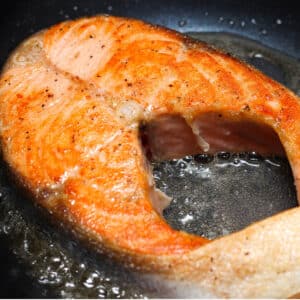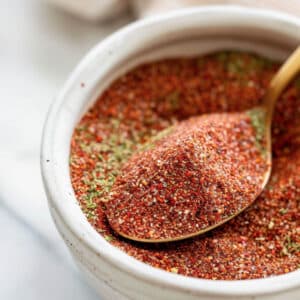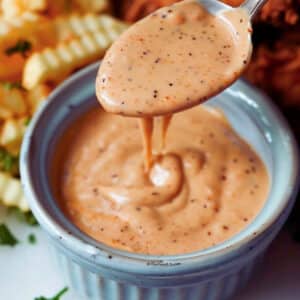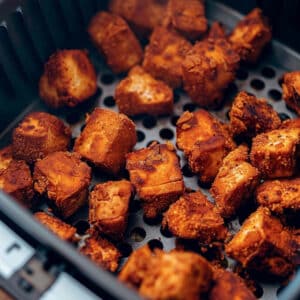Picture this: you spent money on a beautiful salmon fillet, dreaming of a juicy, flavorful dinner. But instead, you ended up with a dry, disappointing piece of fish. Sound familiar?
Don't worry, it happens to the best of us! The good news is, fixing dry salmon is easier than you think. In this guide, I'll break down why salmon dries out and give you the simple tips you need for perfect, juicy salmon every single time.
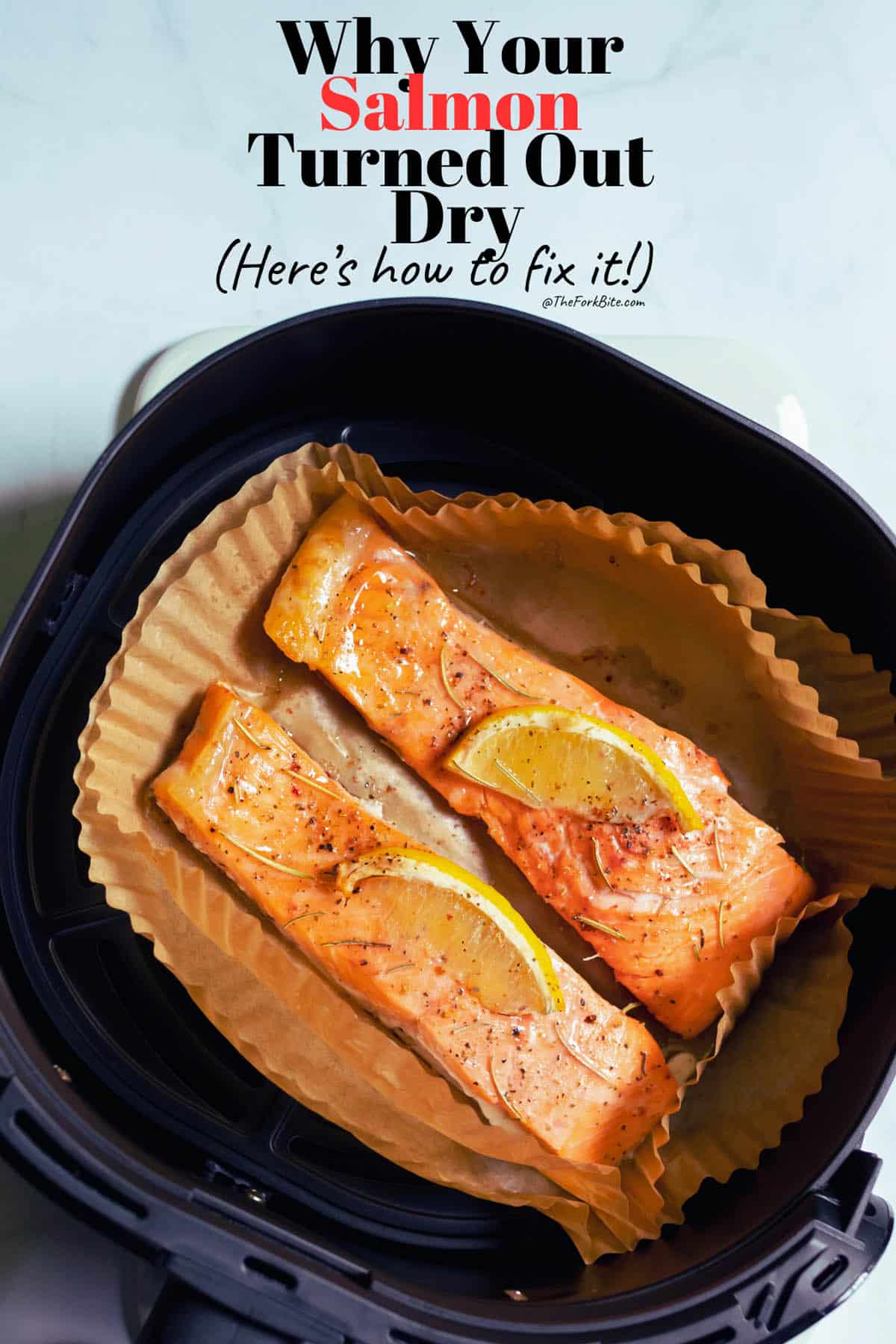
3 Reasons Your Salmon Ends Up Dry
It's frustrating when that lovely salmon turns tough and dry. Here's why it happens, and how to make sure it doesn't happen again:
- Overcooking: Salmon doesn't need to cook for long. Too much time in the oven or pan, and it'll be dry every time. A meat thermometer is your best friend here!
- Harsh cooking: Baking on high heat or boiling your salmon too long? That's a sure way to dry it out. Gentle cooking is key! We've perfected the techniques for juicy baked salmon – learn the secrets in our "How to Bake Salmon in the Oven" guide.
- Not-So-Fresh Fish: If your salmon smells weird or feels slimy even before you cook it, it might be the problem. Get to know a good fish seller and buy the freshest you can find.
Remember:
- Salt helps! Adding a little salt before cooking helps the salmon hold on to moisture.
- Skin is your friend! Cook your salmon skin side down – the skin helps stop it from drying out.
Prevention Techniques
Okay, now that we know what not to do, let's get into the good stuff – how to ensure your salmon turns out juicy and delicious every time. Think of these tips as your secret weapons!
- Choose Your Fish Wisely: Think of salmon like different cuts of steak. Some are naturally fattier, like King or Sockeye salmon. That extra fat makes them harder to dry out, especially for beginners. If you're nervous, start with those!
- Marinate = Moisture Insurance: Don't be afraid of marinades! Even a quick 30-minute soak in something yummy adds both flavor and protection against drying out. We'll get into some simple go-to marinades in a bit.
- Low and Slow is the Way to Go: Forget blasting your salmon with high heat. Gentle is the name of the game! Poaching in a flavorful liquid, baking at a lower temp, or a careful pan-sear will give you that melt-in-your-mouth texture.
- Bonus Tips:
- Basting is Boss: Whether you're baking or pan-frying, a little drizzle of melted butter, olive oil, or your marinade keeps the fish from getting thirsty.
- Skin = Your Secret Shield: Cook skin-side down for most of the time – it helps prevent overcooking.
- Rest is Best: Let your cooked salmon rest for a few minutes before serving. This lets the juices redistribute for maximum deliciousness.
The Magic of Marinades! Simple Recipes for Endless Flavor
Marinades are your secret weapon for juicy, flavorful salmon. They not only add incredible taste, but also act like a protective shield, locking in moisture and preventing dryness. The best part? There's a marinade out there for every flavor preference!
- Classic Lemon Herb: This bright and refreshing marinade is perfect for beginners. Just whisk together lemon juice, olive oil, fresh herbs like dill or parsley, a pinch of garlic powder, and a touch of salt and pepper. Marinate your salmon for at least 30 minutes, and enjoy a taste of the Mediterranean!
- Honey Ginger Glaze: This Asian-inspired marinade adds a touch of sweetness and a delightful zing. Combine soy sauce, honey, grated ginger, and a splash of rice vinegar. Marinate for at least 2 hours for maximum flavor penetration. This pairs beautifully with sesame seeds sprinkled on top before cooking.
Remember: Don't be afraid to experiment! These are just a jumping-off point. Try adding your favorite spices, using different citrus juices, or even a touch of maple syrup for a smoky sweetness.
Gentle Cooking: Your Path to Perfect Salmon
Now that you know how to choose your salmon and whip up tasty marinades, it's time to talk cooking methods! Remember, harsh heat is the enemy of juicy salmon. These techniques are all about low temperatures and careful timing:
- Poaching: The Ultimate Beginner Method: Poaching involves gently simmering your salmon in a flavorful liquid like broth, wine, or even milk infused with herbs. It's practically foolproof and perfect for delicate fillets. Click for Poaching Salmon recipe here.
- Low-Temp Baking: Easy and Delicious: No fuss here! Preheat your oven to a lower temperature (around 275-300°F) and bake your salmon until it's just cooked through. This method keeps the salmon incredibly moist.
- Pan-Searing: For a Crispy Skin: If you love the crispy skin, start by searing your salmon skin-side down in a hot pan. Then, either finish it off in the oven for complete cooking or reduce the heat and let it cook through slowly on the stovetop. Remember to baste! Check the Pan-Seared Salmon here.
Pro Tips:
- Thermometers Are Your Friend: Don't guess! Use a meat thermometer to check the internal temperature of your salmon. Aim for 120°F - 125°F for medium-rare, or go up to 145°F if you prefer it fully cooked.
- Don't Be Afraid of Fat: A little olive oil or butter in your pan or baking dish helps prevent sticking and keeps things moist.
- The Foil Pouch Trick: Wrap your salmon in a foil packet with herbs, veggies, and a splash of liquid. This steams the fish gently and results in a super tender, flavorful dinner. Check out Foil Packet Meals here.
Oops, It's Already Dry! Don't Despair, There's Still Hope
Okay, sometimes even the best of us overcook our salmon. But before you throw it out, remember – there are ways to bring it back to life (well, almost)!
- Don't Panic, Assess the Damage: Is it slightly overdone, or are we talking cardboard-level dryness? Minor dryness can often be salvaged, while extreme cases are better suited for repurposing.
- Sauces to the Rescue: Creamy sauces are your best friend here! Think herbed yogurt sauce, a dollop of crème fraîche, or a drizzle of hollandaise. These add richness and moisture, masking some of the dryness.
- Re-purposing is Key: If the texture is truly beyond saving, don't force it as the main dish. Here's where you get creative:
- Flaky Goodness: Flake the salmon into a creamy chowder or pasta sauce. The other ingredients will add moisture and make the texture less noticeable.
- Patty Power: Turn the cooked salmon into salmon patties or burgers. Mix with breadcrumbs, eggs, and your favorite seasonings for a new dish entirely.
- The Ultimate Salad Topper: Flaked salmon works wonders atop a fresh salad. The vinaigrette and other salad elements will help rehydrate the fish.
Pro Tip: If you chronically overcook salmon, check your oven or stovetop temperature calibration. Sometimes the problem lies with your equipment and not your technique!
Level Up! Taking Your Salmon From Good to Gourmet
You've mastered the fundamentals of juicy, flavorful salmon. Now it's time to explore new culinary frontiers. Get ready to impress yourself (and your guests) with these advanced techniques and flavor combinations:
- Fresh vs. Frozen:
- The Fresh Factor: Nothing beats the delicate texture and flavor of fresh, high-quality salmon. Seek out a trusted fishmonger for the best selection.
- The Freezer Advantage: Frozen salmon can be surprisingly good! Look for individually flash-frozen fillets for optimal quality. Thaw completely in the refrigerator before cooking.
- Pro Tip: Frozen salmon often benefits from a longer marinade to absorb extra flavor and moisture.
- Mastering Specific Techniques
- Grilling Like a Pro: Conquer the grill for salmon with a crispy skin and perfectly cooked interior. Use high heat, preheat your grates well, and don't be afraid of a little oil to prevent sticking.
- Perfect Poaching Every Time: Discover the art of poaching for the most tender salmon. Simmer in a flavorful broth infused with herbs, citrus, and aromatics. A thermometer is key to prevent overcooking!
- Beyond Basic Marinades
- Global Inspiration: Explore spice blends from around the world – Moroccan chermoula, Indian tandoori, Japanese teriyaki...the possibilities are endless!
- Herb Power: Elevate your marinades with fresh herbs like dill, chives, basil, or tarragon. A little goes a long way.
- Smoky Sophistication: Try incorporating a touch of liquid smoke or smoked paprika to add depth and complexity to your salmon.
Why is my Salmon Dry (Here's How to Fix it)
Pin RecipeInstructions:
3 Reasons your Salmon Ends up Dry:
- Overcooking: Salmon doesn't need to cook for long. Too much time in the oven or pan, and it'll be dry every time. A meat thermometer is your best friend here!
- Harsh Cooking: Baking on high heat or boiling your salmon too long? That's a sure way to dry it out. Gentle cooking is key!
- Not-So-Fresh Fish: If your salmon smells weird or feels slimy even before you cook it, it might be the problem. Get to know a good fish seller and buy the freshest you can find.
Prevention Techniques:
- Choose Your Fish Wisely: Think of salmon like different cuts of steak. Some are naturally fattier, like King or Sockeye salmon. That extra fat makes them harder to dry out, especially for beginners. If you're nervous, start with those!
- Marinate = Moisture Insurance: Don't be afraid of marinades! Even a quick 30-minute soak in something yummy adds both flavor and protection against drying out. We'll get into some simple go-to marinades in a bit.
- Low and Slow is the Way to Go: Forget blasting your salmon with high heat. Gentle is the name of the game! Poaching in a flavorful liquid, baking at a lower temp, or a careful pan-sear will give you that melt-in-your-mouth texture.
It's already Dry! Don't despair, there's still Hope:
- Don't Panic, Assess the Damage: Is it slightly overdone, or are we talking cardboard-level dryness? Minor dryness can often be salvaged, while extreme cases are better suited for repurposing.
- Sauces to the Rescue: Creamy sauces are your best friend here! Think herbed yogurt sauce, a dollop of crème fraîche, or a drizzle of hollandaise. These add richness and moisture, masking some of the dryness.
- Re-purposing is Key: If the texture is truly beyond saving, don't force it as the main dish. Here's where you get creative:Flaky Goodness: Flake the salmon into a creamy chowder or pasta sauce. The other ingredients will add moisture and make the texture less noticeable.Patty Power: Turn the cooked salmon into salmon patties or burgers. Mix with breadcrumbs, eggs, and your favorite seasonings for a new dish entirely.The Ultimate Salad Topper: Flaked salmon works wonders atop a fresh salad. The vinaigrette and other salad elements will help rehydrate the fish.
Notes:
Bonus Tips:
-
- Basting: Whether you're baking or pan-frying, a little drizzle of melted butter, olive oil, or your marinade keeps the fish from getting thirsty.
- Skin = Your Secret Shield: Cook skin-side down for most of the time – it helps prevent overcooking.
- Rest is Best: Let your cooked salmon rest for a few minutes before serving. This lets the juices redistribute for maximum deliciousness.
Please note that all nutrition information are just estimates. Values will vary among brands, so we encourage you to calculate these on your own for most accurate results.

